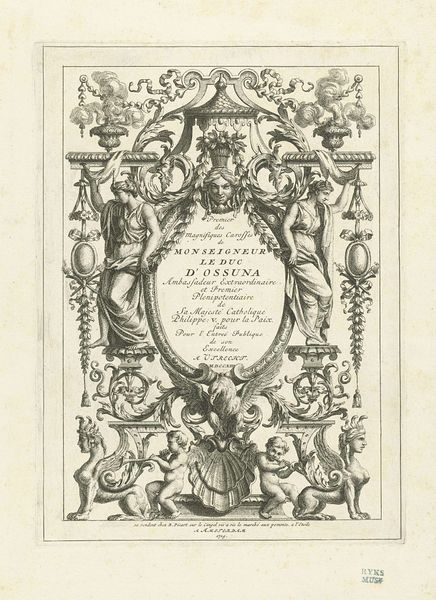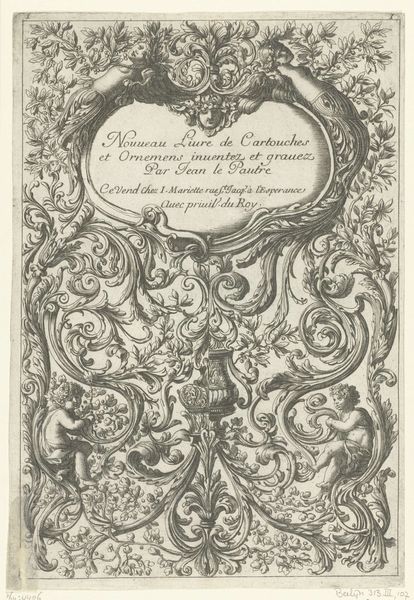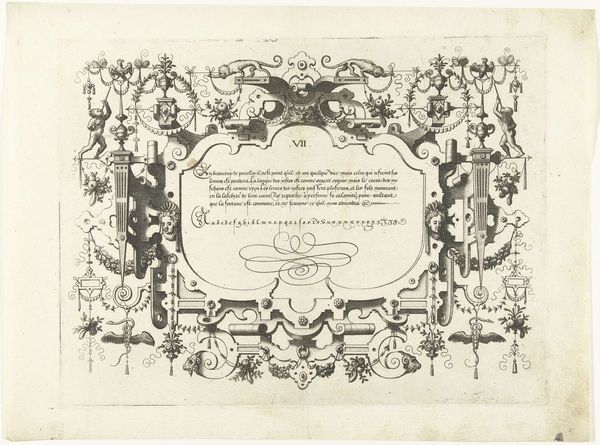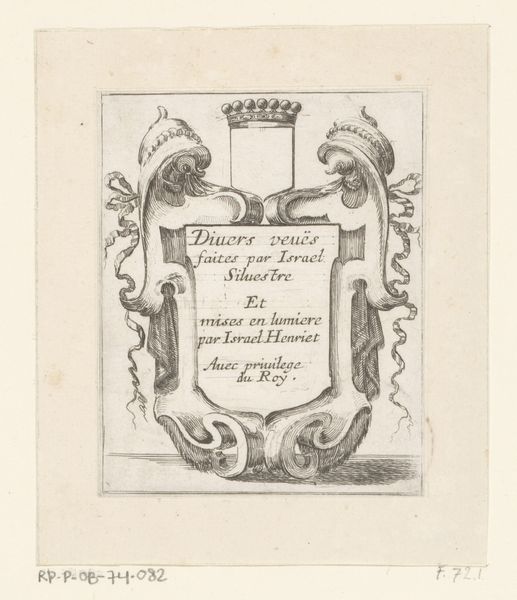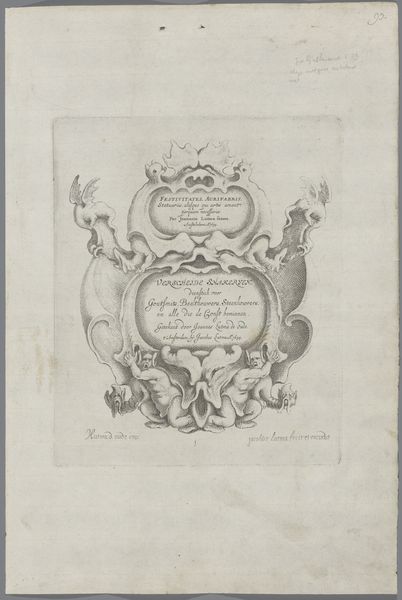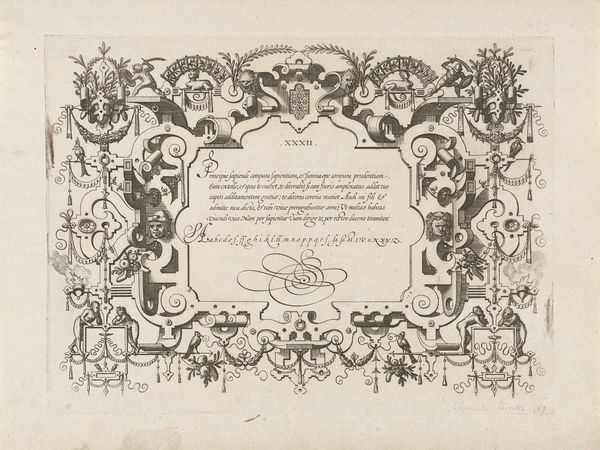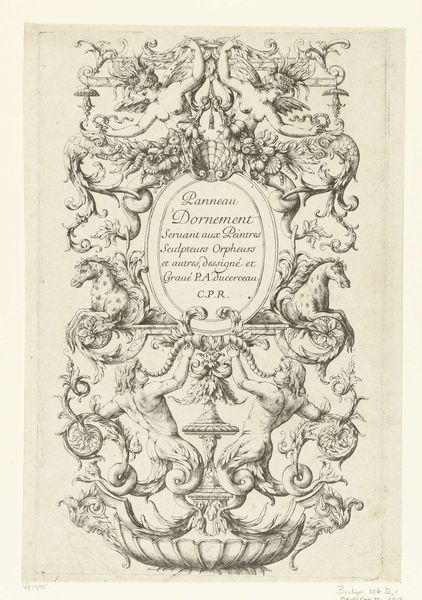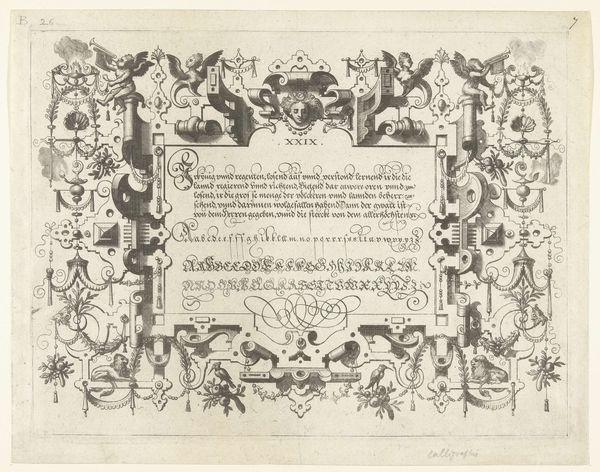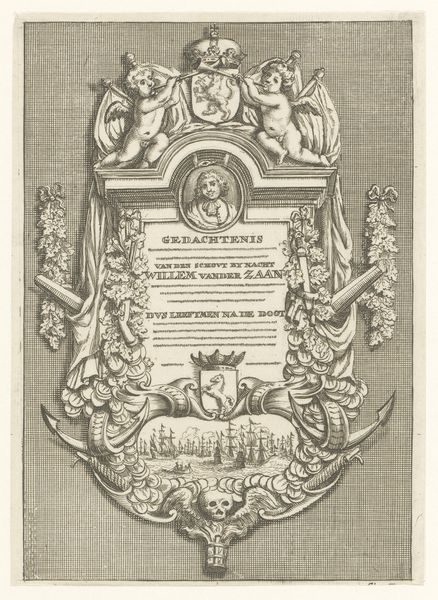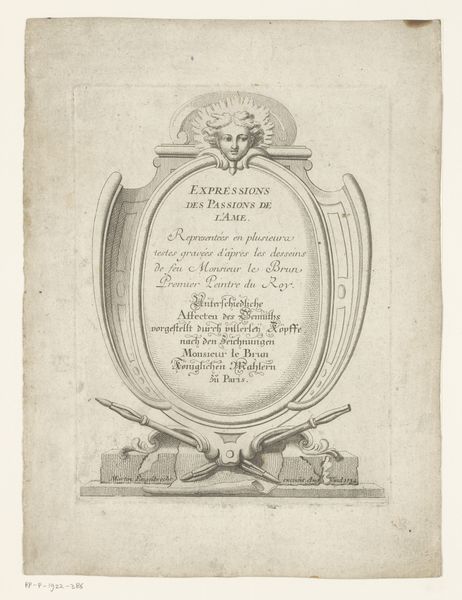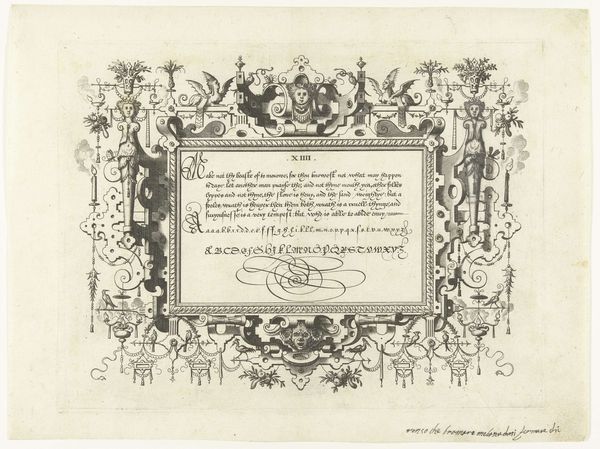
print, engraving
#
baroque
# print
#
geometric
#
decorative-art
#
engraving
Dimensions: height 214 mm, width 169 mm
Copyright: Rijks Museum: Open Domain
This anonymous engraving presents an elaborate cartouche, a frame for text, teeming with acanthus leaves and baroque flourishes. These are not mere decorations. The acanthus leaf, seen here so vividly, echoes back to ancient Greece, where it adorned temples as a symbol of enduring life and regeneration. Notice how this motif reappears throughout history. From the capitals of Corinthian columns in ancient Greece, to Roman friezes, and even in the illuminated manuscripts of the Middle Ages, the acanthus continuously reemerges. This repetition is no accident; it speaks to a collective memory, a subconscious desire to connect with the past and imbue the present with a sense of timelessness. The cartouche itself, intended to frame and highlight text, is not static, but a vibrant, almost organic form. It pulsates with life, engaging us on a visceral level. This is the power of symbols: their ability to resonate across centuries, transcending language and culture, to awaken deep-seated emotions and associations within us. The acanthus leaf and the cartouche motif continue to evolve, their forms ever-changing, yet their essential meaning – life, continuity, and the desire to preserve and elevate – remains remarkably constant.
Comments
No comments
Be the first to comment and join the conversation on the ultimate creative platform.
